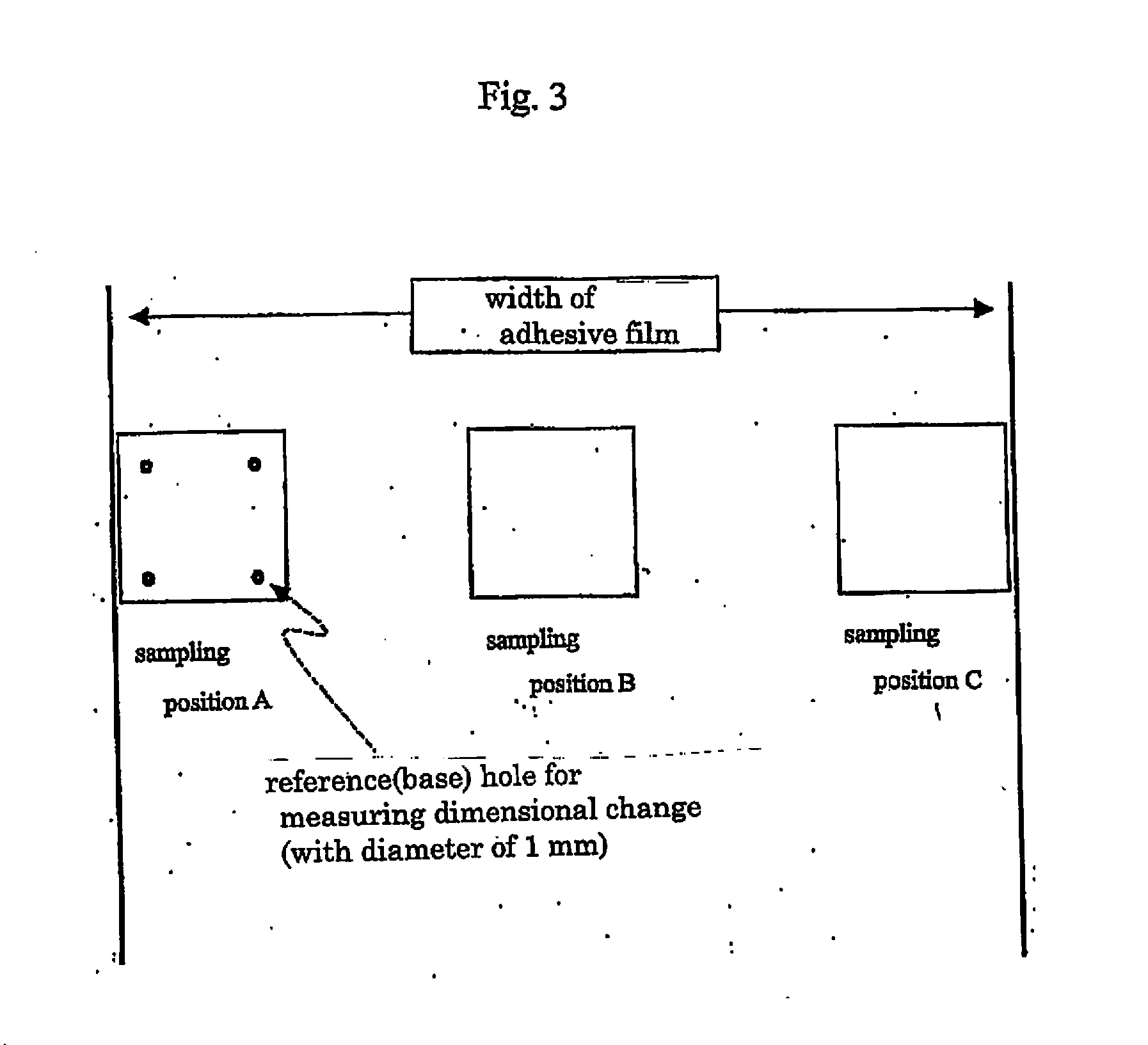Adhesive Film, Flexible Metal-Clad Laminate, and Processes for Producing These
a technology of flexible metalclad laminates and adhesive films, which is applied in the direction of film/foil adhesives, heat-activated film/foil adhesives, and insulating substrate metal adhesion improvement, etc., can solve the problems of dimensional change, three-layer fpc using thermosetting adhesives may not be able to meet these stringent requirements, and the dimensional change is suppressed, so as to achieve the effect of md and td direction
- Summary
- Abstract
- Description
- Claims
- Application Information
AI Technical Summary
Benefits of technology
Problems solved by technology
Method used
Image
Examples
synthetic example 1
Production of Polyimide Film
[0212] Pyromellitic dianhydride, 4,4′-oxydianiline, and p-phenylenediamine were polymerized at a molar ratio of 1 / 0.75 / 0.25 in an N,N′-dimethylacetamide solvent so that the solid content was 18%.
[0213] To be more specific, 75 mol % of 4,4′-oxydianiline relative to the total diamine content was dissolved in an N,N′-dimethylacetamide solvent, and the total amount of pyromellitic dianhydride (i.e., 133% of acid anhydride relative to the diamine component already added) was added thereto to prepare an acid-terminated prepolymer.
[0214] Next, the acid-terminated prepolymer solution was combined with the rest of the diamine component (i.e., the p-phenylenediamine) so that the diamine component was substantially equimolar with the total of the acid component, and the resulting mixture was reacted to obtain a polymer solution.
[0215] The polymer solution was cooled to about 0° C. and combined with 2.0 mol % of acetic anhydride and 0.5 mol % of isoquinoline per ...
synthetic example 2
Production of Polyimide Film
[0218] A polyimide film was produced by applying heat and tension in the hot-air / far-infrared furnace while controlling the tension by a roll-to-roll technique as in SYNTHETIC EXAMPLE 1 but except that tensions and heating conditions were changed as shown in Table 1.
synthetic example 3
Production of Polyimide Film
[0219] Pyromellitic dianhydride, p-phenylene bis(trimellitic acid monoester anhydride), 4,4′-diaminodiphenyl ether, and p-phenylenediamine at a molar ratio of 1 / 1 / 1 / 1 were polymerized in an N,N′-dimethylacetamide solvent so that the solid content was 18%.
[0220] The polymer solution was cooled to about 0° C. and combined with 2.1 mol % of acetic anhydride and 1.1 mol % of isoquinoline per mole of amic acid in the polyamic acid organic solvent solution cooled to about 0° C. The resulting mixture was thoroughly stirred, extruded from a die maintained at about 5° C., and applied on an endless belt by flow casting to heat and dry the cast solution. A gel film having a residual component content of 60 wt % was obtained as a result.
[0221] The resulting self-supporting green sheet (gel film) was peeled off and the ends thereof were fixed onto pin seats for continuously transferring the film. The film was then transferred through hot air furnaces, a far-infrare...
PUM
 Login to View More
Login to View More Abstract
Description
Claims
Application Information
 Login to View More
Login to View More - R&D
- Intellectual Property
- Life Sciences
- Materials
- Tech Scout
- Unparalleled Data Quality
- Higher Quality Content
- 60% Fewer Hallucinations
Browse by: Latest US Patents, China's latest patents, Technical Efficacy Thesaurus, Application Domain, Technology Topic, Popular Technical Reports.
© 2025 PatSnap. All rights reserved.Legal|Privacy policy|Modern Slavery Act Transparency Statement|Sitemap|About US| Contact US: help@patsnap.com



